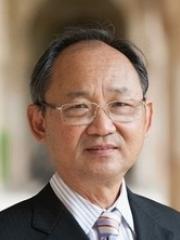Emeritus Professor Sritawat Kitipornchai
Advanced Engineering Building (49)

Researcher biography
Editor-in-Chief (1993-2021); Honorary Editor (since 2022):: Engineering Structures journal
Emeritus Professor Sritawat Kitipornchai Named Highly Cited Researcher: 2019; 2020; 2021; 2022; 2023
Emeritus Professor Sritawat Kitipornchai has been named as a Cross-Field Highly Cited Researcher by Clarivate over the past 5 years, in the 2019; 2020, 2021, 2022 and 2023 editions of their list. There are less than 7000 researchers in the world who made it to the list. The title of Highly Cited Researcher is reserved only for those who have consistently published work with exceptionally high academic impact over a sustain period. Professor Kitipornchai is a world-renowned researcher in structural engineering and applied mechanics. His pioneering studies in a number of areas have been internationally recognized and acknowledged as being at the forefront of their fields. He is one of the most prolific researchers, with a Web of Science h-index of 82, which is one of the highest among civil engineering researchers in Australia.
Professor Kitipornchai has published 20 Highly Cited Papers in recent years in the cross-disciplinary field of engineering mechanics and composite structures. His research on the mechanical performances of composite beams and plates at the micro-/nano- scales was the first of its kind and has had a significant impact on the development of micro-systems in civil, mechanical engineering, such as atomic force microscopes by which the mechanical behaviour of micro-/nano-structures can now be examined.
To address the urgent need for lightweight yet very strong structures with a promising application potentials in various areas such as aircraft, space shuttle, automobiles, marine structures and buildings, Professor Kitipornchai and Professor Jie Yang at RMIT University have led a strong research team to conduct cutting-edge research work on the novel inhomogeneous composite structures reinforced by super strong carbon nanotube or graphene based nanomaterials. This innovative idea is to disperse these nanomaterials non-uniformly with more in the part where they are most needed to achieve significantly improved mechanical properties. They have also introduced non-uniform distribution of internal pores to further reduce the weight of the proposed structures. These pioneering studies have opened up a new avenue for the development of new generation structural forms with an excellent combination of high stiffness and low weight. Their research findings have received extensive citations from peer researchers.
Another notable contribution of Professor Kitipornchai lies in the analysis and design of transmission towers. Together with his former UQ colleague, Professor Faris Albermani, they have developed the only known technique with the ability to simulate accurately the ultimate structural behaviour of latticed transmission tower structures. The current power industry practice requires tower structures to undergo full-scale testing, which is very costly and time consuming. The developed numerical simulation technique has been widely applied in Australia's power industry. It has the potential to save the industry hundreds of millions of dollars worldwide and to increase the safety of tower structures.
Professor Kitipornchai was elected to the Australian Academy of Technological Sciences and Engineering in 2009 and to the European Academy of Sciences and Arts in 2016.
